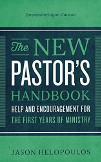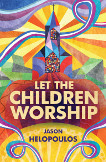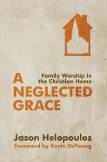
Eternalizing the Old Testament
When reading the Old Testament we come across such language as that of "an everlasting ordinance" (Exodus 12:14, 17), "everlasting covenant" (Gen. 9:16; 17:7, 13, 19; 2 Samuel 23:5), "everlasting possession" (Gen. 17:8; 48:4; ) and "everlasting priesthood" (Exodus 40:15). It is sometimes used of the covenant sign of circumcision, sometimes of the ceremonial festivals like the Passover (Exodus 12:14-17) and sometimes of the physical land of Israel. One of the most important biblical-theological matters with which we must wrestle is that of how we are to harmonize the Old Testament teaching about "everlasting" ordinances with the teaching of the apostles as to the abrogation of the command to circumcise (1 Cor. 7:19; Gal. 5:6, 11; and 6:15), the cessation of the Old Covenant festivals and ceremonies (Col. 2:16) and the notable absence of any mention to the land inheritance (of Israel) in the New Testament. In addition, we have to grapple with the New Testament teaching about the change of Priesthood from Levi to Judah, when, in fact, we are told in the Old Testament that the Levitical Priesthood was to be an "everlasting Prieshood" (Ex. 40:15). So, how are we to reconcile these seeming contradictions? Can we defend the inerrancy of Scripture when we fail to see continuation of these "everlasting" things mentioned in the Old Covenant period of revelation? What is the best way forward in pressing through the challenge of understanding these seeming contradictions?
Perhaps surprisingly, there is an exceedingly simple and straightforward solution to this conundrum. The eternal, Divine nature of the Son of God in the Person of Jesus Christ gives the typical elements of the Old Testament their eternal significance. Jesus, in His Person and work, fulfills and establishes the substance of the everlasting shadows and ordinances for His people. In short, the everlasting Christ--in the New Covenant--eternalizes and spiritualizes the everlasting ordinances of the Old Testament for Jews and Gentiles who believe on Him.
For instance, the eternal Son received the mark of circumcision on the eighth day and then was circumcised at Calvary in a bloody circumcision (see this post for a fuller development of this idea). On account of this, we can say that circumcision is an "everlasting covenant"--not to be physically continued for any religious purpose, but to be realized spiritually in the atoning death of the Son of God and in His work of regeneration in the hearts of His people.
Regarding the Passover, in 1 Cor. 5:7 the Apostle tells us that "Christ our Passover was sacrificed for us." Jesus is our Passover Lamb. He is the greater Moses who brings His people out of the bondage of Satan, sin and death through His own death (as the death of the firstborn son) on the cross. When He died, John noted that "not one of His bones were broken." This was part of the prescription of a right observance of the Passover in the Old Testament. We no longer celebrate the Passover as the Jews of old did. Now we celebrate the Passover when we "keep the feast with the unleavened bread of sincerity and truth."
When we come to consider the Promised Land, we find that when God promised Abraham that he would inherit the land He had something so much bigger than the physical land of Israel in view. The apostle Paul tells us that "the promise that he would be the heir of the world was not to Abraham or to his seed through the law, but through the righteousness of faith." The word הָ אָ רֶ ץ can be translated either land or earth. It is used in Gen. 12:1 where God promised Abraham that he would inherit the land. One can immediately see how Paul understands the development from the idea of the land of Israel (as being the typical inheritance) to the inheritance of the entire world.
God’s promise to Abraham functions on two levels: 1) the typical, earthly promise, and 2) the eschatological realization of this promise in the new heavens and new earth. It is, in fact, the case that Abraham’s descendants (i.e. those who have faith in Christ, see Gal. 3) become heirs of the “world,” in Him who overcame and received the inheritance of the world from His Father. In Christ, we too become heirs of God and of the world. This is also the explanation of the words of our Lord, “The meek shall inherit the earth,” and Peter’s reference to the New Heavens and the New Earth. Believers will come to possess “all things,” as Paul explains in 1 Corinthians 6. The inheritance of the "new heavens and the new earth" is dependent on Christ inheriting the world through His atoning death and resurrection. Jesus is the One to whom the promises were actually made. The promises that God gave to Abraham come first to Christ, who in turn fulfills them for us (Gal. 3:16). Jesus fulfilled the covenant conditions and so merited all the blessings of God. All those who have faith in Him will also inherit all things. This includes the land of Israel and the rest of the world with it. In this way, we can say that the land promise to Abraham is for "an everlasting possession.
The Priesthood of the Old Testament is somewhat more difficult to understand as having been fulfilled in Christ since the writer of Hebrews makes a distinction between the order of Jesus' everlasting Priesthood (Heb. 5-7) and the temporal nature of the Levitical. Still, there is ample proof that the Levitical Priesthood was preparatory, yet the same in substance with the Priesthood of Christ. In a previous post I sought to show how the priesthood transfers from Levi to Judah at the baptism of Jesus in the Jordan by His cousin John, who was <a href="http://feedingonchrist.com/the-last-of-the-levites/">the last of the Levites</a>. Though the Levitical Priesthood has passed away, and Jesus has an unchangeable Priesthood according to the order of Melchizedek (Heb. 5-7), the substance of the Levitical ministry is realized and eternalized in Jesus. Geerhardus Vos masterfully summed up the eternalization or spiritualization of the the "everlasting" types and shadows (specifically, but not limited to, the Mosaic economy) of the Old Testament in Christ when he wrote:
Eschatological revelation is presented in the language of the Mosaic institutions. The New Testament first transposes it into a new key. Here in the New Testament it is spiritualized. In the Old Testament it is expressed in terms of perfection of the forms of Israel’s theocracy. The holy city is center; offices, organizations, peace, abundance, etc. are there, but this all is to be eternalized in the Messianic era, and will be free of the vicissitudes of the present era. All this is the content of revelation.1
Everything in the Old Testament Scriptures is fulfilled in Jesus. This is how the Apostle could say, "all the promises of God in Him are 'Yes,' and in Him 'Amen,' to the glory of God" (2 Cor. 1:20). Jesus takes all of the shadows, ordinances and promises of the Old Testament, fulfills them in His death and resurrection and then gives the spiritual and eternal substance of them to His people who believe in Him. If we would seek to understand how all things move into and out of Him, we must keep Him at the center of our hermeneutical process. He is the everlasting Son of God and establishes all the everlasting blessings of God for us who trust in Him. 1. Geerhardus Vos, The Eschatology of the Old Testament (Phillipsburg, NJ: P & R Publishing, 2001) pp. 118
Christward Collective is a conversation of the Alliance of Confessing Evangelicals. It is supported only by its readers and gracious Christians like you. Please prayerfully consider supporting Christward Collective and the mission of the Alliance.



















 © Alliance of Confessing Evangelicals
© Alliance of Confessing Evangelicals


